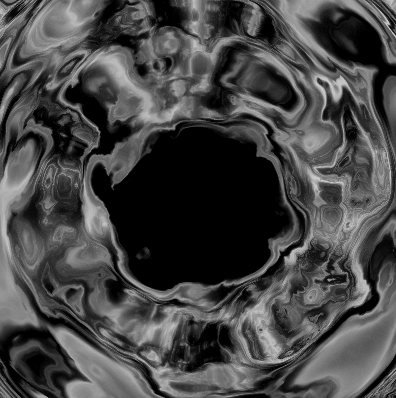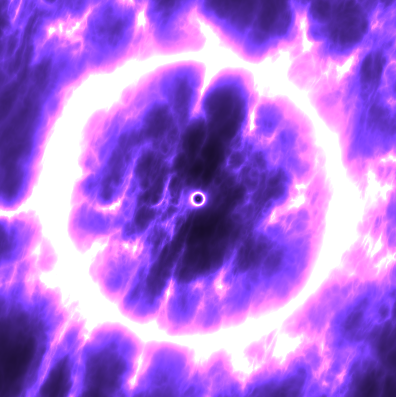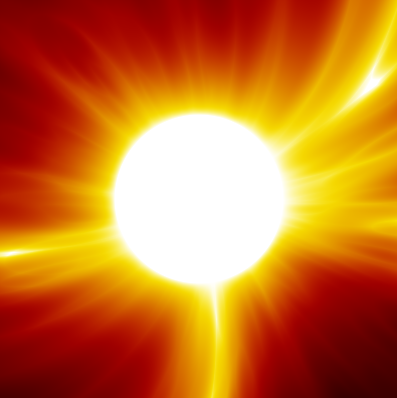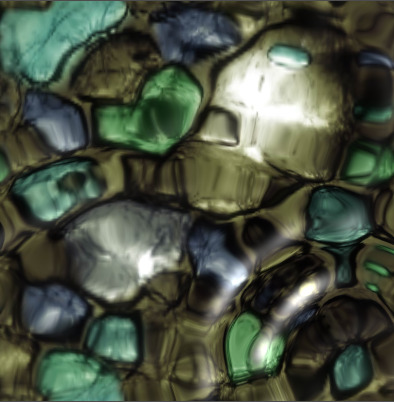Oil Stain
My attempt at converting https://www.shadertoy.com/view/ll2GRt
See the link for animation.
To use, place the shader on a shaderMaterial on a colorRect.
Please enjoy
I learned to convert glsl shaders to godot shaders using these resources. You can learn it too!
https://docs.godotengine.org/en/3.4/tutorials/shaders/converting_glsl_to_godot_shaders.html
https://www.youtube.com/watch?v=Kn49zhCwg-0
Shader code
shader_type canvas_item;
uniform vec4 color : hint_color = vec4(0.3, 0.3, 0.3, 0.75);
mat2 rot2d(float angle)
{
vec2 part1 = vec2(cos(angle),-sin(angle));
vec2 part2 = vec2(sin(angle),cos(angle));
return mat2(part1, part2);
}
float r(float a, float b)
{
return fract(sin(dot(vec2(a,b),vec2(12.9898,78.233)))*43758.5453);
}
float h(float a)
{
return fract(sin(dot(vec2(a, a), vec2(12.9898, 78.233))) * 43758.5453);
}
float noise(vec3 x){
vec3 p = floor(x);
vec3 f = fract(x);
f = f*f*(3.0-2.0*f);
float n = p.x + p.y*57.0 + 113.0*p.z;
return mix(mix(mix( h(n+0.0), h(n+1.0),f.x),
mix( h(n+57.0), h(n+58.0),f.x),f.y),
mix(mix( h(n+113.0), h(n+114.0),f.x),
mix( h(n+170.0), h(n+171.0),f.x),f.y),f.z);
}
vec3 dnoise2f(vec2 p){
float i = floor(p.x), j = floor(p.y);
float u = p.x-i, v = p.y-j;
float du = 30.*u*u*(u*(u-2.)+1.);
float dv = 30.*v*v*(v*(v-2.)+1.);
u=u*u*u*(u*(u*6.-15.)+10.);
v=v*v*v*(v*(v*6.-15.)+10.);
float a = r(i, j );
float b = r(i+1.0, j );
float c = r(i, j+1.0);
float d = r(i+1.0, j+1.0);
float k0 = a;
float k1 = b-a;
float k2 = c-a;
float k3 = a-b-c+d;
return vec3(k0 + k1*u + k2*v + k3*u*v,
du*(k1 + k3*v),
dv*(k2 + k3*u));
}
float fbm(vec2 uv){
vec2 p = uv;
float f, dx, dz, w = 0.5;
f = dx = dz = 0.0;
for(int i = 0; i < 28; ++i){
vec3 n = dnoise2f(uv);
dx += n.y;
dz += n.z;
f += w * n.x / (1.0 + dx*dx + dz*dz);
w *= 0.86;
uv *= vec2(1.16);
uv *= rot2d(1.25*noise(vec3(p*0.1, 0.12*TIME))+
0.75*noise(vec3(p*0.1, 0.20*TIME)));
}
return f;
}
float fbmLow(vec2 uv){
float f, dx, dz, w = 0.5;
f = dx = dz = 0.0;
for(int i = 0; i < 4; ++i){
vec3 n = dnoise2f(uv);
dx += n.y;
dz += n.z;
f += w * n.x / (1.0 + dx*dx + dz*dz);
w *= 0.75;
uv *= vec2(1.5);
}
return f;
}
void fragment()
{
vec2 uv = 1.0-2.0*(UV.xy / (1.0 / TEXTURE_PIXEL_SIZE).xy);
uv.y /= (1.0 / TEXTURE_PIXEL_SIZE).x/(1.0 / TEXTURE_PIXEL_SIZE).y;
float t = TIME*0.6;
vec2 rv = uv/(length(uv*2.5)*(uv*30.0));
uv *= rot2d(0.3*t);
float val = 0.5*fbm(uv*2.0*fbmLow(length(uv)+rv-t));
uv *= rot2d(-0.6*t);
COLOR = color;
COLOR *= 1.6*vec4( vec3(0.5*fbm(uv*val*8.0)+0.02*r(uv.x,uv.y)), 1.0 );
COLOR.rgb *= 3.8;
COLOR.rgb = COLOR.rgb/(1.0+COLOR.rgb);
COLOR.rgb = smoothstep(0.18, 0.88, COLOR.rgb);
}





